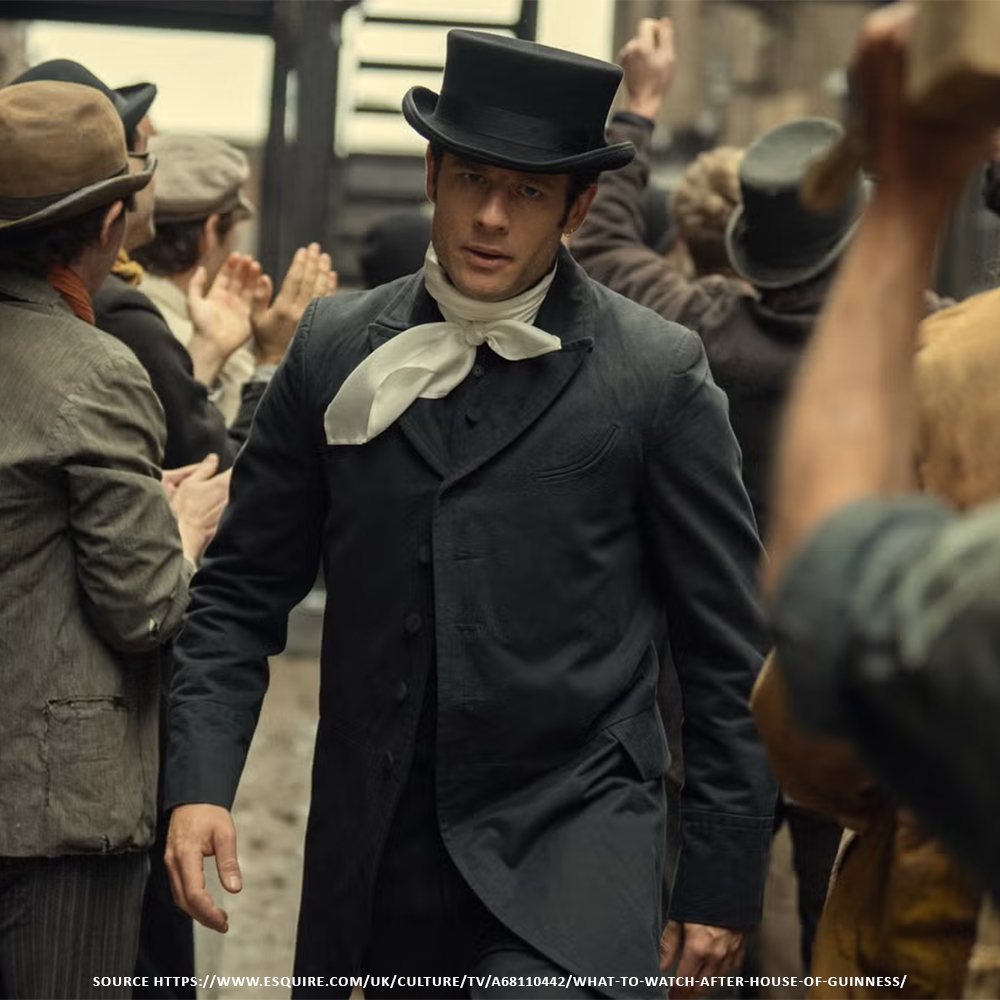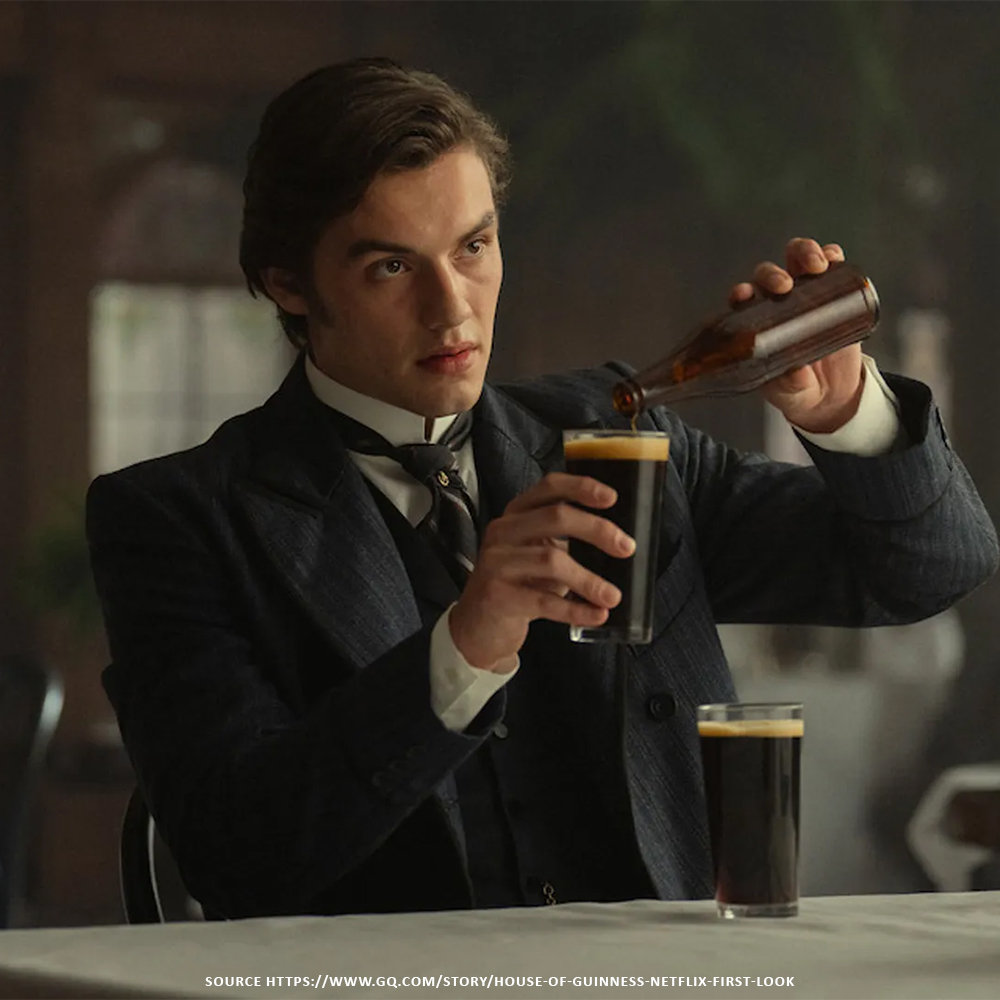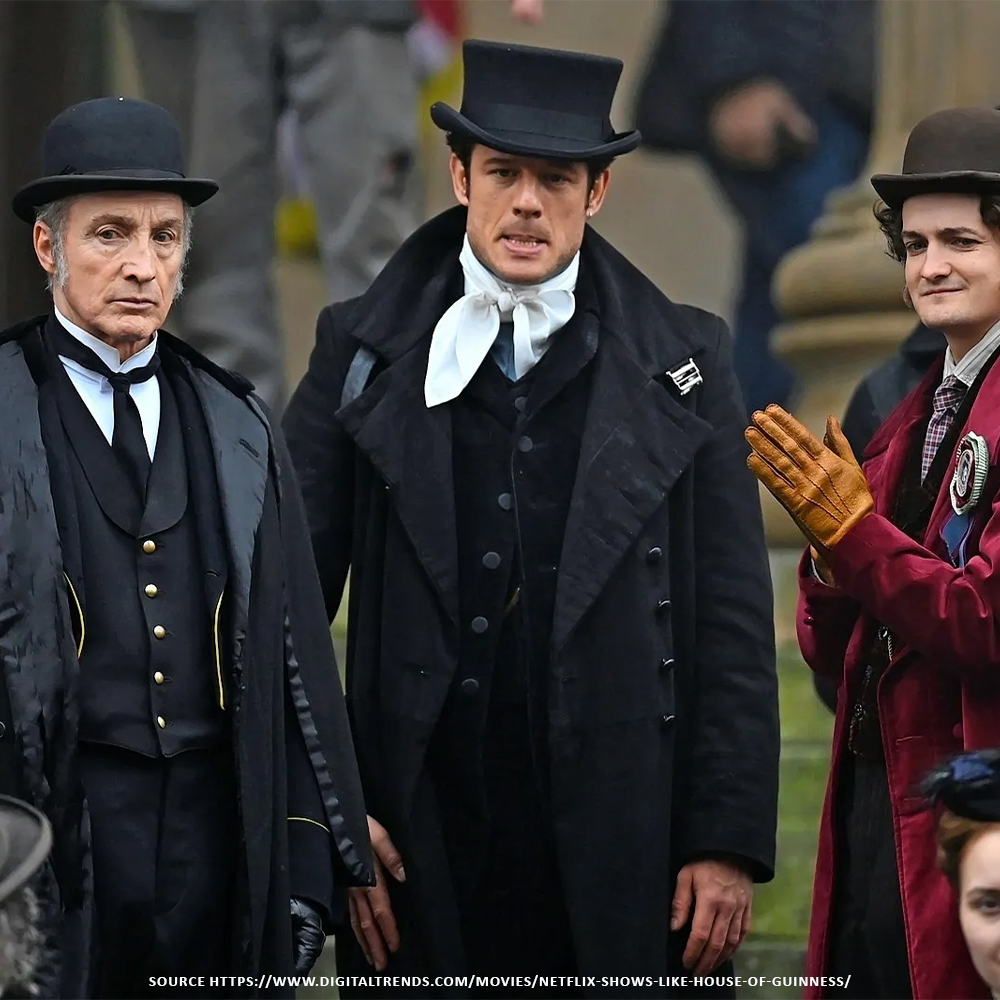
Some dramas are about the script, others about the scenery. House of Guinness, Netflix’s sweeping historical series, is about something subtler: the language of clothes. Watch closely and you’ll see that its dark wool suits, sweeping coats, and waistcoats heavy with texture aren’t just wardrobe – they’re weapons. They frame power, ambition, and legacy in a way dialogue alone never could.
For those of us who live and breathe tailoring, it feels familiar. This craft has always been about more than fabric and fit. It’s about presence. It’s about the way a man carries his story into the room before he says a word. And in an age where first impressions are made at a glance, those lessons feel as urgent as ever.
Style as storytelling
Every frame of House of Guinness offers a reminder: clothing is narrative. A broad-shouldered jacket signals command. A long overcoat, cut to sweep with purpose, suggests authority that lingers even in silence. These choices aren’t costume – they’re storytelling devices.
That idea sits at the very heart of tailoring. When a suit is cut, it’s not simply cloth shaped to a frame; it’s perception being shaped in real time. The lapel width, the roll of a shoulder, the fall of a trouser leg: these details read as fluently as lines of dialogue. A well-chosen fabric speaks of refinement, a sharp silhouette of discipline, a subtle accent of individuality. In tailoring, nothing is ever accidental.

The silent power of presence
One of the most striking lessons from House of Guinness is how power announces itself without sound. The patriarch of the story need not raise his voice; his suit does it for him. The cut through the waist, the defined chest, the disciplined collar; these aren’t embellishments. They’re signals. They create a presence that commands attention before a single word is spoken.
The same is true today. Walk into a boardroom, step onto a stage, or sit across a dining table – your clothing frames how you are read. A bespoke suit is not indulgence; it is preparation. It is armour designed to let you move with intent and to remind the world of your stature before you even shake a hand.
That is the work of the tailor. A blazer can elongate the frame, trousers can complement natural movement, and shirts can rest perfectly at collar and cuff. The details may be subtle, but together they form a statement: this is a man who knows who he is and how he wants to be remembered.
Heritage, modernised
The series revels in 19th-century detail, but it never feels dated. That’s because style, unlike fashion, is cyclical. The layers of textured wools, the interplay of deep palettes, the carefully chosen accessories; they all feel as relevant today as they did a century ago. What changes is interpretation.
That’s where the art of modern tailoring lies. The great tailors borrow gravitas from the past without ever slipping into costume. A high-buttoned waistcoat becomes a slim vest beneath a contemporary jacket. A heavy wool overcoat is transformed into a lightweight topcoat suitable for modern climates. An embroidered flourish becomes a discreet monogram stitched into the cuff.
The genius of true style is adaptability. It evolves to suit the needs of the present while retaining the authority of its heritage. That’s why the best-dressed man in the room never looks overdressed: he looks timeless.

Dressing as legacy
The great dramas remind us of something we often forget: clothing is legacy. It reflects ambition, values, even morality. It tells others who we are and, more importantly, who we intend to be. In House of Guinness, the garments are inseparable from the characters’ journeys. They embody authority, but also continuity – each stitch a link in the chain of legacy.
This, too, is the essence of bespoke. A finely tailored suit does not just fit the body – it frames character. A wardrobe built with care becomes a man’s lasting signature, remembered long after conversations fade.
That’s why tailors labour over details that few others might notice. The line of a shoulder, the drape of a jacket, the whisper of hand-finished stitching: they all contribute to a narrative larger than the garment itself. The question is never just “What do you want to wear?” It is “What do you want your clothes to say about you?”

The gentleman’s choice
What House of Guinness dramatises in period detail, the tailoring craft continues in real time: men using clothing as a tool of presence, confidence, and command. In an era of fleeting fashion and casual ubiquity, the enduring strength of bespoke tailoring lies in its ability to stand apart – not loud, but certain.
A man in a bespoke suit doesn’t look like he’s playing dress-up. He looks like himself – sharper, surer, more complete. That’s the true gift of tailoring: it doesn’t create a mask, it clarifies identity.
And that’s something Ascots & Chapels has been perfecting for generations.
Author: Gary Sweeney
